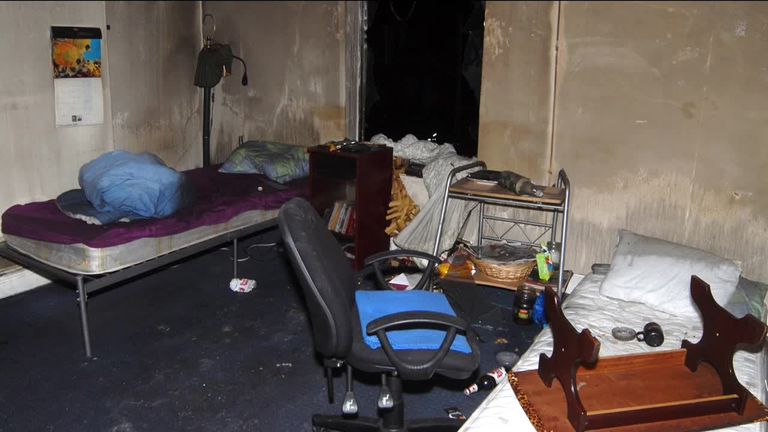Modern slavery: Rise in victims being used by rogue traders
The exploited workers are forced by rogue traders to undertake聽unnecessary, shoddy household jobs at rip-off prices.
Wednesday 27 November 2019 08:45, UK
Victims of modern slavery are increasingly being used by criminal gangs to carry out door-to-door scams, according to National Trading Standards.
Consumer investigators across the country are reporting more cases of captive workers being exploited to undertake unnecessary, shoddy household jobs at rip-off prices.
Rogue traders deliberately target vulnerable homeowners, such as the elderly or disabled, often living alone, according to the watchdog.
Its teams in Yorkshire and the Humber, the North East, Central England and the East of England, have found a growing number of slavery victims are being used in scams.
These are people, often immigrants, who are held captive and forced to work with little food and little or no pay.
NTS chairman Lord Harris said: "The doorstep scammer is not a lovable rogue.
"Often behind the person who turns up at your door offering cut-price services is a serious criminal.
"Not only are they happy to rip off older people, those living on their own, and indeed anyone who is taken in by their patter, but they may also be exploiting and even enslaving vulnerable people to help them carry out their crimes.
"Consumers need to be vigilant to old scams wrapped in 21st century packaging and to ruthless criminals who will stop at nothing in pursuit of ill-gotten riches."
According to the UK's annual report on modern slavery published last month, police recorded 50% more offences (5,059) in the year to March 2019 than the previous 12 months.
There was also a 36% hike in the number of potential victims identified and referred for support over the same period, increasing to 6,985.





